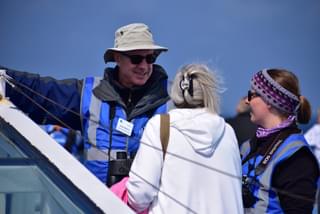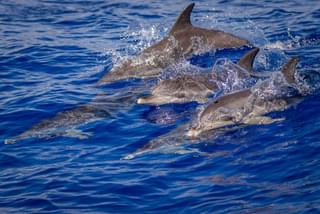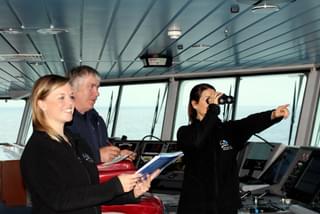Bowhead whale
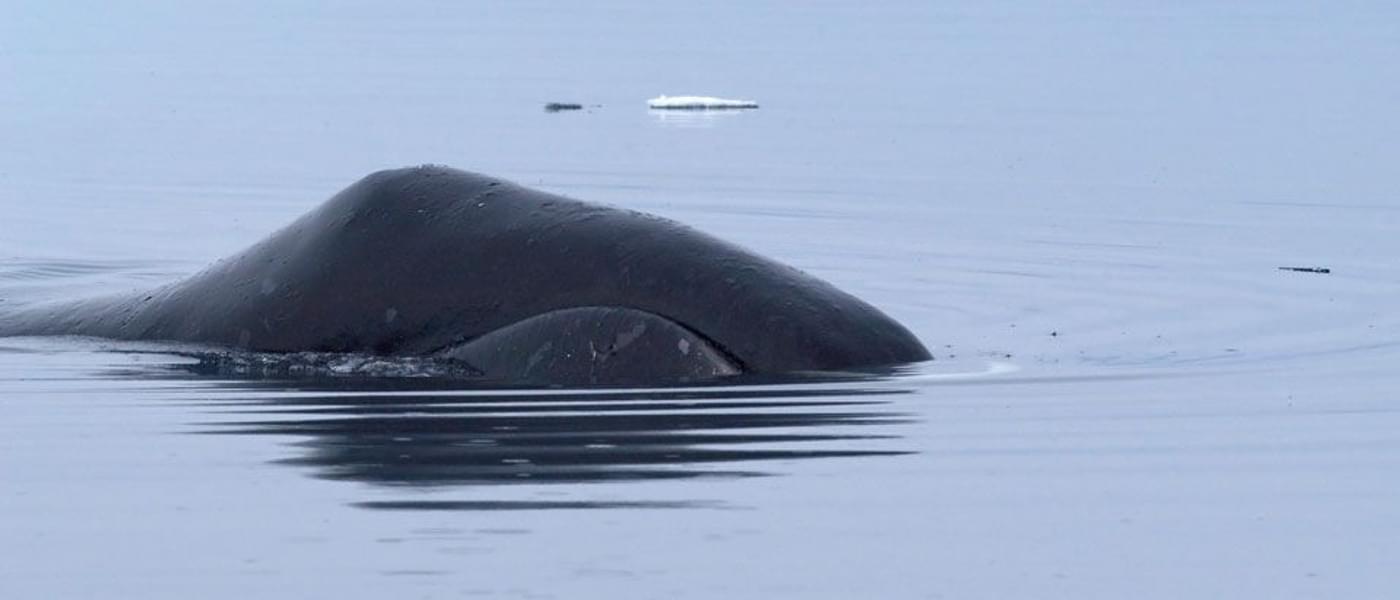
Balaena mysticetus
14 - 19m
Black
Baleen
No dorsal fin
The bowhead whale is named for the shape of its enormous and distinctive bow-shaped skull. They are large stocky whales and have a layer of blubber up to 42cm thick and the longest baleen of any whale, with plates reaching 5m in length. When lying on the surface, its profile resembles that of the loch ness monster, with two humps appearing above the surface of the water. The species is also renowned for being one of the longest-lived on earth, with a record at 211 years old.
Key features:
- V-shaped blow ~4m high
- Rounded back and no dorsal fin
- White tail stock, white chin and lower jaw
- Strongly arched jawline with a 'peak and trough' head profile
Behaviour
Bowhead whales feed at or below the surface of the water. They are slow swimmers but are known to breach, lob-tail, slap the water with their pectoral fins and spy-hop. When surfacing, the v-shaped blow with head and body appear first, they usually sink below the surface and occasionally will steeply arch their tailstock. Tail flukes are visible on a deep dive. Bowhead whales generally travel in groups of 1 - 6 individuals, but larger groups of up to 14 are occasionally sighted. They are rarely found far from the edge of the pack ice and are the only large whales to live exclusively in the Arctic.
Threats
For several centuries bowhead whales were heavily hunted with a small number still being taken today by native subsistence hunters. Other threats include; habitat loss, chemical and noise pollution, ship strike and climate change.
Distribution
Bowhead whales are found in arctic and subarctic waters, close to ice packs. They normally migrate to the high Arctic in the summer months but retreat southwards with the advancing ice packs in the winter months. They’re very rare in Europe but have previously been seen around the UK.
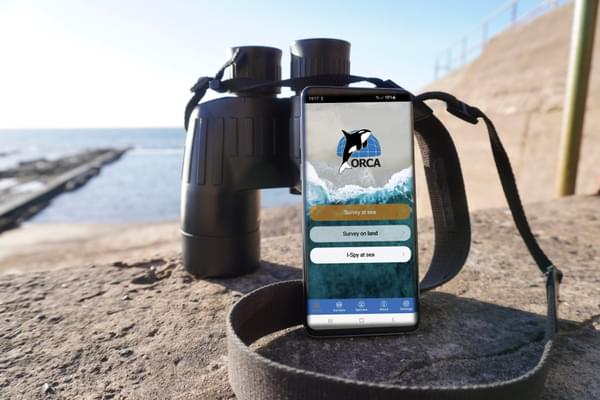
Study whales and dolphins as an ORCA OceanWatcher
The ORCA OceanWatchers online training course, along with a bespoke app, will enable everyone to collect data about whales, dolphins and porpoises. And it can be collected from anywhere that you can see the sea - whether that’s from your local beach, on holiday at the coast, scanning the seas from a cruise ship, travelling via ferry, or from your own boat.
You may also be interested in

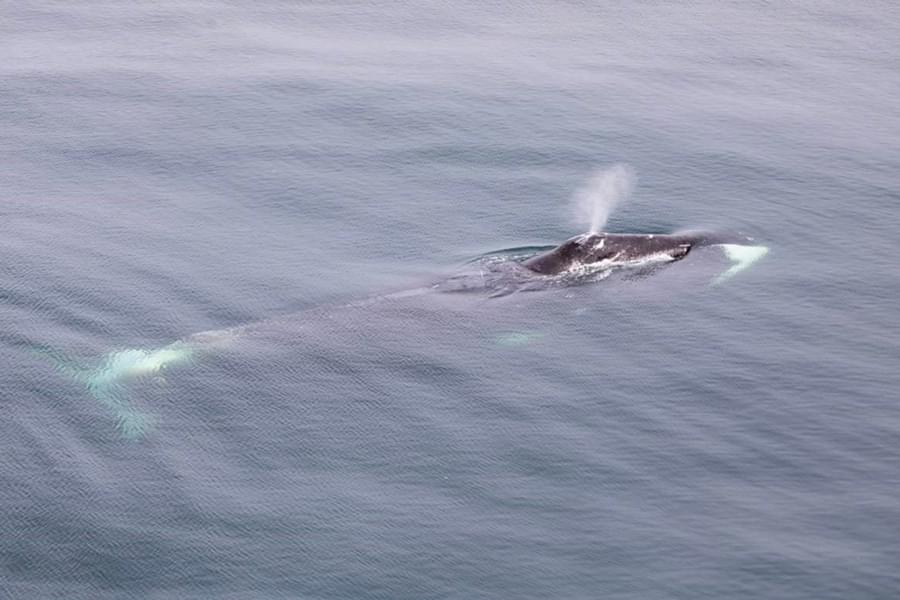
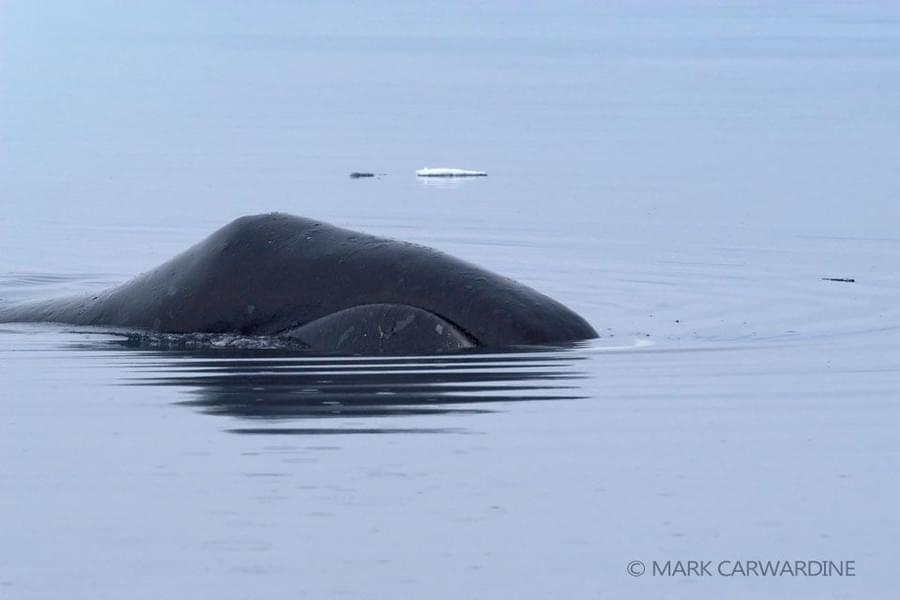
.jpg?w=900&h=600&q=85&auto=format&fit=crop&dm=1683137513&s=a399d2f25976f2d8a41117c7fee1956f)
.jpg?w=900&h=600&q=85&auto=format&fit=crop&dm=1683137513&s=74621dfa9a84ebdf1ea528b66c93cc03)
